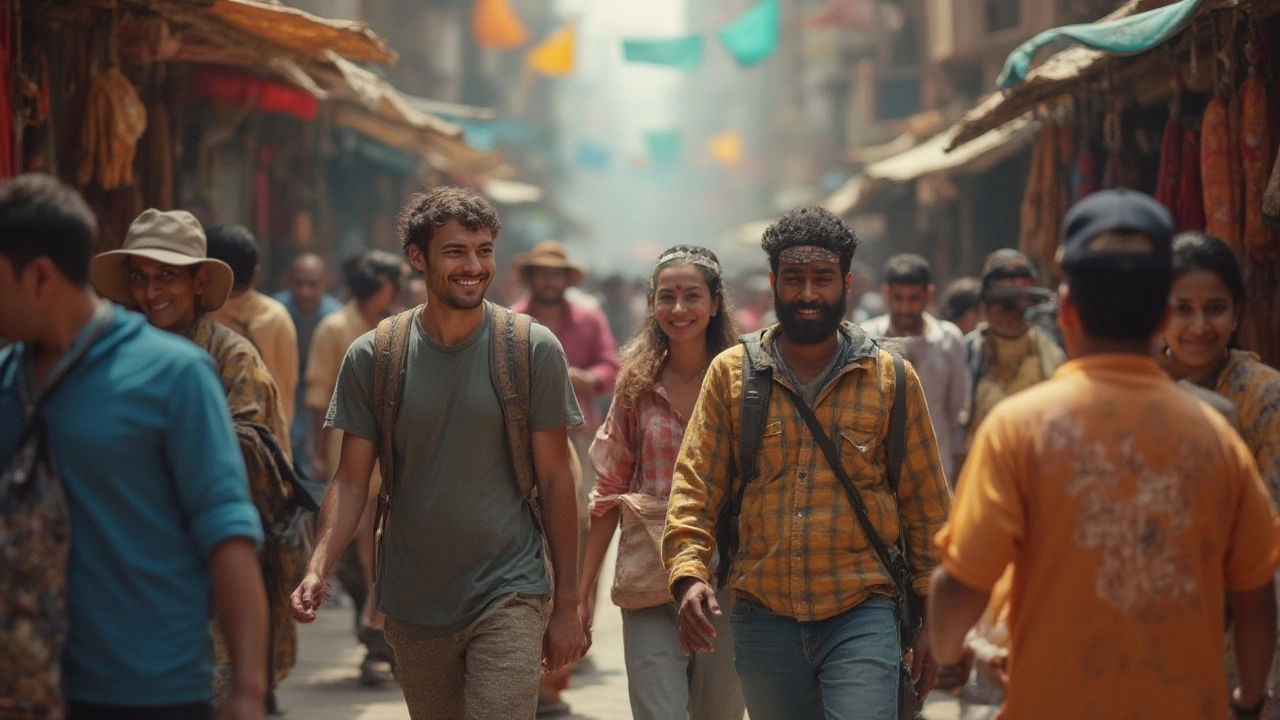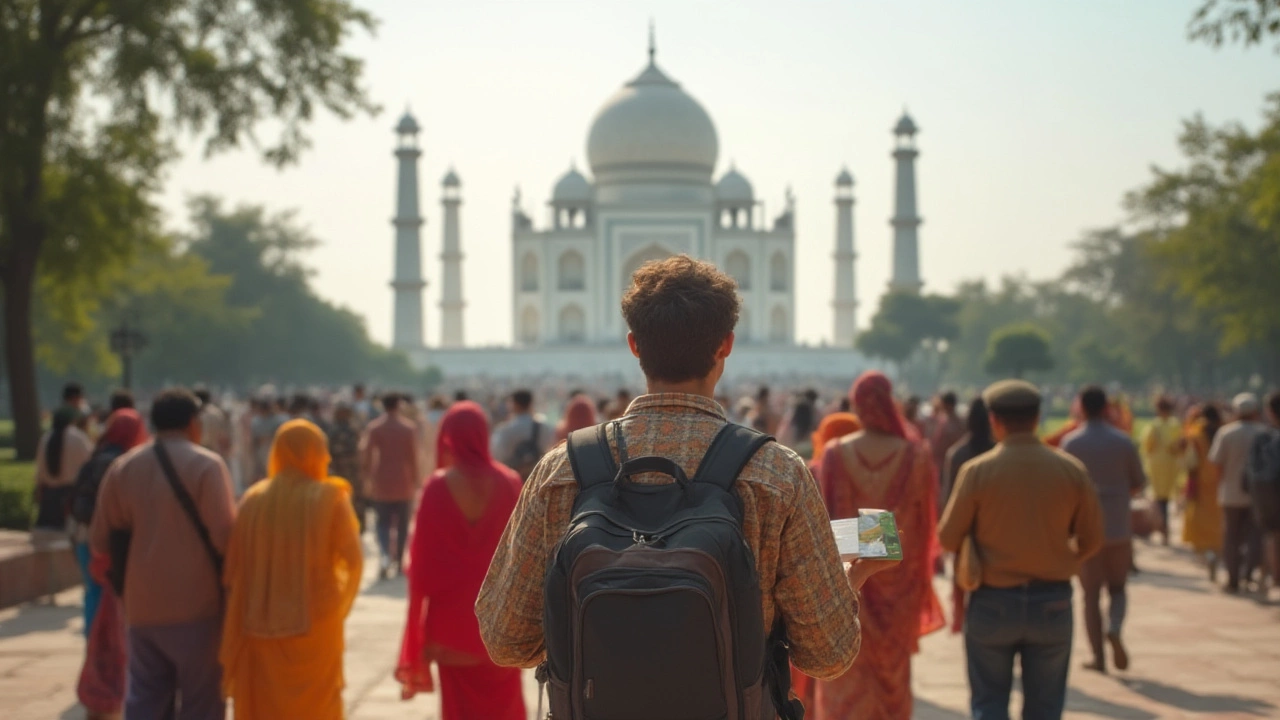Picture stepping off the plane in Delhi or Mumbai. The air is spiced and electric. Colors hit you with every turn, from saris to street murals. You can’t help but crave the street food, marvel at ancient forts, and yes—wonder just how safe you are as a US citizen exploring India. News headlines love drama, but what is it really like? Let’s talk honest truths, smart travel moves, and what you need to know before booking that ticket.
Understanding Safety: What The Numbers and News Don’t Tell You
Is India dangerous for US travelers? Not by default. More than 1.4 million foreign tourists, including a big bunch from the US, visited India in 2024, according to India’s Ministry of Tourism. Most had the time of their lives, posting vibrant, envy-worthy selfies and exploring heritage sites that make any European castle seem modern. But a few did face scams, petty theft, and even rare medical emergencies—about the same rate you’d see in any major tourist hot spot.
Are there risks? Absolutely. India can be overwhelming, especially in cities like Delhi or Kolkata, where crowds, traffic, and pollution crank up the chaos. Occasional reports churn up crime stories, but statistically, violent crime against tourists is rare. Pickpocketing, bag snatching, and small scams are much more common. The US Embassy keeps a regular log of incidents, but if you keep normal street smarts sharp, you reduce risks dramatically.
Check travel advisories, but don’t freak out. As of July 2025, the US State Department lists India as "Exercise Increased Caution"—the same advice they give for parts of France, Germany, and even the UK, all countries adored by American tourists. Regions near the Pakistan border, certain northeastern states, and Kashmir are different stories. Those carry a "Do Not Travel" tag due to ongoing security issues. For the rest of India: millions of travelers visit safely every year.
is it safe for us citizens to travel to india? The statistics below might clear things up:
| Year | US Citizens Visiting India | Reported Safety Incidents* | Travel Advisory Level |
|---|---|---|---|
| 2022 | 1,235,000 | 586 | Exercise Increased Caution |
| 2023 | 1,320,000 | 601 | Exercise Increased Caution |
| 2024 | 1,427,000 | 608 | Exercise Increased Caution |
*Reported safety incidents include minor thefts, lost passports, and very few physical crime cases. For context, the US Embassy receives thousands of calls yearly for everything from medical questions to lost luggage.
Scams, Street Sense, and Solving Problems Before They Happen
Now, let’s cut to the chase: petty scams are the real headache here, not violent crime. Taxi drivers "forgetting" to turn on the meter, guides who seem legit but vanish at the first sign of trouble, or rickshaw trips that go in circles before reaching your hotel—all classics. If New York has fake Rolexes and Paris has pickpockets near the Eiffel Tower, India’s tourist traps are just as creative.
How do you dodge the trouble? Easy: stick to government-licensed taxis or use app-based rides like Ola and Uber, which now work reliably in every big city. Don’t flash cash. Use ATMs inside banks for safer withdrawals. Ignore the "friendly stranger" who wants to take you to the "best shop in town." And don’t drink tap water—stick to sealed bottles from brands like Bisleri or Kinley.
Theft happens in crowded places: Old Delhi markets, major train stations, and tech hubs like Bangalore’s MG Road. Keep backpacks zipped in front of you. Hotels in the 3- to 5-star range are usually safe, but always lock valuables in a room safe or leave them at the front desk.
- No public displays of cash or luxury gadgets.
- No impromptu night strolls in lonely neighborhoods.
- Stash backup credit cards and ID photocopies in a separate bag.
- Check reviews on trusted sites before booking hotels or tours.
If something goes wrong, don’t panic. The tourist police—yes, they exist—wear white uniforms and are often found in major tourist spots. Their English can be patchy, but they’re usually motivated to help foreigners, especially if you keep your cool and explain the issue clearly. For lost passports, contact the US Embassy in New Delhi or the consulates in Mumbai, Chennai, Hyderabad, and Kolkata. Most embassies are open Monday to Friday, with emergency services on weekends.

Health, Food, and Hygiene: The Unskippable Guide
Delhi belly isn’t just an urban legend—it’s the quickest way to mess up your Taj Mahal selfie plans. Your stomach is not immune to new spices, but the major culprit is contaminated food or water. Street food is delicious, but choose wisely. If it looks clean and locals are queuing up, you’re probably good. If the vendor looks bored and the oil smells like a car workshop, skip it.
Medical care in India is a mixed bag. Big cities have modern hospitals with English-speaking doctors. You’ll find clinics like Apollo or Fortis, and expats swear by them for everything from minor infections to emergency surgeries. Rural or small town hospitals? Not so much. Always pack your own meds, including treatment for diarrhea, motion sickness, and allergies.
Vaccines are your best friend. As of this year, recommended shots for US travelers include Hepatitis A and B, Typhoid, and Tetanus. Malaria risk is low in cities, but still possible in rural or forested areas, especially during the monsoon (June to September). Bring insect repellent, cover arms and legs in the evenings, and use hotel-provided mosquito nets if available.
- Eat peeled fruits. If in doubt, skip raw salads at cheap eateries.
- Never drink tap water. Use bottled or ask hotels for filtered water.
- Carry hand sanitizer and tissues—many public toilets lack basics.
- Get travel insurance that covers health care and emergency evacuation.
You won’t need a prescription for common meds at Indian pharmacies, but ask a doctor before popping unfamiliar pills. Mosquitos may be smaller here, but they’re relentless, so stock up on repellent with DEET—the local stuff is usually good.
Cultural Smarts and Mindful Travel: Respect Equals Comfort
India’s no stranger to outsiders, but culture shock hits hard if you come unprepared. People are direct, sometimes noisy, and everyone’s in your business—mostly out of genuine curiosity. Dress on the modest side, especially in temples, mosques, and smaller towns. For women, scarves and loose pants are always a safe bet. Guys, keep shirts on, even at beaches unless everyone else is going shirtless (Goa is an exception, not the rule).
Photography in religious places is often banned (those "no photos" signs aren’t just for show). If someone offers to show you around for free, expect a tip request—and it’s not rude to say "no thanks." Do use your right hand for eating and handshakes; the left is, well, for other things.
Respecting local holidays and festivals can reward you with some of the best travel stories of your life. Holi and Diwali often involve big crowds and loud celebrations—carry earplugs if you’re sensitive to noise. Sometimes, protests break out in city centers during election seasons or after major events. Avoid large gatherings and walk away if a crowd seems agitated. Police presence is high during festivals and Election Day, so just follow directions and play it cool.
- Public affection isn’t big here. Stick to holding hands if you’re a couple.
- Learn a few Hindi phrases. "Namaste," "Kitna paisa?" (How much?), and "Shukriya" (Thank you) earn smiles.
- Always bargain at markets, but with humor, not hostility. You’ll get better prices and fun banter.
- Eat with your hands at local joints—everyone does it—but wash up first.
If you’re respectful, you’ll find locals go out of their way to keep you safe or steer you in the right direction. Sometimes, you might even get offered chai by strangers, especially in villages or small towns.
India isn’t without its challenges, but for millions of American travelers, it’s the trip that rewires the way you see the world. Common sense, curiosity, and a willingness to learn get you further than fancy gear or unlimited cash. Go in with your eyes open and a solid plan—and you’ll have stories to tell for decades.
